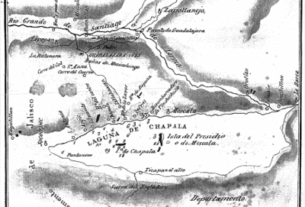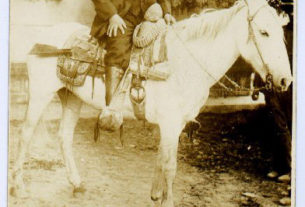An original short story set in Mexico
When Ramon handed the ball to me, I was pleased to find it was latex, not some synthetic material. It was probably very old, made from raw rubber. This one did not have a human skull inside.
As I handed the guy my credit card for the rental car, an ominous voice inside me was asking a damned good question.
“What does sliding around in the dirt in Culiacan, Mexico, trying to throw your hip into a big rubber ball have to do with your job as an anthropologist?”
The easy answer was “If I’m going to do a paper, I want to actually play the game.”
The game is ulama, the ball court game of ancient Mesoamerica. I had just learned from one of my colleagues, who had recently witnessed a game in a small town near Mazatlan, that there were two or three small ball courts used for pickup games in barrios around Culiacan. I figured I had earned this little side trip; after all in the last two years I had visited ball court sites and museums from Yucatan to Paraguay studying what must be history’s most enduring athletic contest. To put the fact in perspective, the Olmec conceived the game 3500 years ago — try to imagine our modern baseball, basketball or football being played in the year 5555 A.D.
The most compelling thing that has held my interest in the study is that current theories about the game and the ball hardly notice the elephant in the room; the ball is the game. The ball is not simply a rubber ball. It is a gimmick, a toy, an invention like the hula hoop, the slinky or Play-dough. Original balls were made by tapping the rubber tree, collecting its sap, called latex, heating and mixing it with the sap of the morning glory vine (an ancient catalyst that gave the balls extra bounce) then molding it around a human skull. The skull took up space, the ball bounced like no leather ball ever could (leather was used for centuries all over the world in ball games). It was the first super-ball. It weighed then, as today, about four kilos or nine pounds, was almost indestructible and, when hit with the proper force, bounced like it was on the moon.
Twenty two dollars in tolls (well worth the comfort of the road) got me safely to Culiacan. I got away from El Centro and found a clean, quiet room in a small hotel. After a shower and change of clothes I asked the clerk how to get to the barrio of El Rosario where I had been told they had some make-shift ball courts. Once in El Rosario, I stopped into a little tienda and asked about ball courts. The clerk, probably the owner of the store, smiled and pointed at another small store directly across the street. The owner of that store said he allowed his son and some of his son’s friends to use the lot behind the store for games of ulama from time to time. I explained my business and asked if I could meet with his son to arrange a game. His son, Ramon, worked at a junk yard in another barrio, would be home around six — he said I could come back then and talk to Ramon.
Ramon looked to be about 18 years old. He was naturally suspicious at first but after I explained what I needed, told him I would pay for the game, for the chance to participate, if only for a brief minute or two, get the feel of the game, the ball, the movement, he lightened up and showed some interest and even some enthusiasm. Since all the players worked or went to school, the game would have to be played on Sunday. This was Thursday. While Ramon set up the game, I would drive south to Mazatlan and perhaps find more courts, more players where my colleague, Jorge, had encountered games.
I found no games in Mazatlan. What I found was torrential rain; while there, going and coming, during the day, at night, unrelenting downpours made the driving almost impossible and sleep difficult.
Finally, the place and the hour came together under a blessedly cloudless sky back in Culiacan. The court was just a narrow dirt place surrounded by chain link fences of various heights and in various conditions of disrepair. There were two big trees just outside the side fences where the players stood or sat in the shade. There were only four young men, including Ramon — about as far as he could stretch the thousand pesos I gave him and still make a nice profit for the time and effort on his day off.
Ramon had the ball. When he handed it to me I was pleased to find it was latex, not some synthetic material. It was probably very old, made from raw rubber (this one did not have a human skull inside). It had a little give to it but felt heavier than nine pounds. The boys had their uniforms slung over their shoulders. Just the yokes, the traditional waist and hip protectors, no other protective padding of any kind except one boy had taped some carpet-layer’s rubber kneepads to his knees and proudly showed them off to me and his pals. He took some good-natured kidding about the modern addition but he ate it up. The yokes were just heavy cloth and leather affairs that reminded me of Sumo uniforms.
Ramon handed his yoke to me and pointed at a door at the rear of the tienda, a place where I could change. I put all my stuff in the car trunk except my pants, took the piece through the back door, found a dark, cluttered place to change.
Impossible. I tried every which way to wear the thing but I was just too big, too fat for this little thing. I had come a long way so, after a few minutes of total failure, I went back out to see if any of the other boy’s yokes were larger or of a different design. There was friendly tittering all around as they laid them out under the tree to check the length, width, laces. The laughing continued as I asked them if there were any gordos in the barrio who had uniforms. The answer was in their watery eyes. I was just too big for this little game.
I got dressed, got my camera and asked the boys to begin a regular game so I could get some pictures, learn a little about the modern day game, its rules, barrio El Rosario rules and regulations.
As I drove back toward my hotel, I realized I had learned nothing about the ancient ball game. All I learned was what the game had become, what was left of the grandest cultural-athletic celebration perhaps in all modern history was a few near-naked Mexican boys skinning themselves up in the dirt for a little exercise and a lack of interest in baseball and soccer. These boys, their fathers and grandfathers who may have played the game would know little about its rich history, its origin or the grand and colorful venues in which the games were played before the birth of Christ. They could not know that when the Maya played the game it was the most serious business of their lives. The real stakes in the game were life or death. The players, the fans, the priests all played their parts, wagered against their gods, cheated death at every game while reenacting the story of the creation of their world.
I had walked through all 23 splendid, formal ball courts at Chichen Itza including the huge ceremonial area which spanned the great distance of 545 feet by 225 feet. Most ball courts are no more than 13 feet wide and form the shape of a capital I. So far over 700 ball courts have been discovered and it is estimated that we will find more than 1,500 when all the jungles of Mesoamerica have been explored. Because gore sells, thrives on morbid curiosity, the boys might know that some Maya ball players were beheaded after the contests. The winning captain would offer his neck to the losers who would decapitate him — the event was marked with grand religious ceremony wherein the honor bestowed upon the dead man was his direct and speedy ascent to Maya heaven. Maya heaven was normally attained by a rigorous and elaborate 13 step process beginning at death; two other ways to skip the steps were death in war battle and death by hanging, suicide. My young pals probably would not know about recent discoveries that indicate captured slaves were made to play the game and were ceremoniously decapitated at end of play — the first gladiators?
Modern Mexicans or Amerindians likewise would probably not know about the other forms of ball games played in the same courts. At least four other forms of the game were played with smaller rubber balls. One was played with a bat, one, predominately played by women, included use of the forearms. There were several versions of games played with the ball passing through stone hoops and some in which the ball was made to hit carved stone figures protruding from the sides of the rock walls of the ball court. Since the big ball could literally kill a man if hit with enough force, some forms of the game called for players to wear elaborate armor. Part costume, part uniform, part body armor they took many forms — probably changed over time just like Crusader battle armor.
What we know little about today are the fans. We know they gambled heavily on the games. Maya glyphs tell us they rewarded the winning team players with money and jewelry. One account tells of an unusually unappreciative crowd who did not offer enough. All players were allowed to go after the fans, take what they thought the contest was worth right from their person.
No one knows how many rubber balls remain today in Mesoamerica. Synthetic balls just don’t work and nobody is making new rubber balls in the same way they were made thousands of years ago. There are as many reasons for the game’s decline and disappearance as there were reasons for its longevity. I would like to buy some of the balls just to preserve them but they sell for as much as $2,000 dollars; even if I could afford that I would not want to take a single ball away from the chance that the game could be continued with its use.
As I motored back north to Los Angeles, I was thinking I should have taken some shots of the Culiacan player’s yokes (such as they were) laid out there in the shade of the big trees. I guess vanity got in my way. I usually pay little attention to my girth, my figure, my weight, my diet. The failed fitting was a real wake up call. All the Maya had, three millennium ago, was corn, corn and more corn — the beverage of choice with or without a meal was something like a corn smoothy. The only small breaks in their diet would be some squash, beans or the occasional turkey. They took in about 2,000 calories a day. I’ve never done a calorie count but that’s probably just my morning snack.
If I do start a diet, it won’t have much corn in it. Straight corn for a month or so would have me wanting an early death. Maybe that hanging thing would be the way to go. Use the rope, skip all thirteen steps to the good place. I’ll have to research Maya heaven, see if they have any pasta or ice cream or gin up there.


